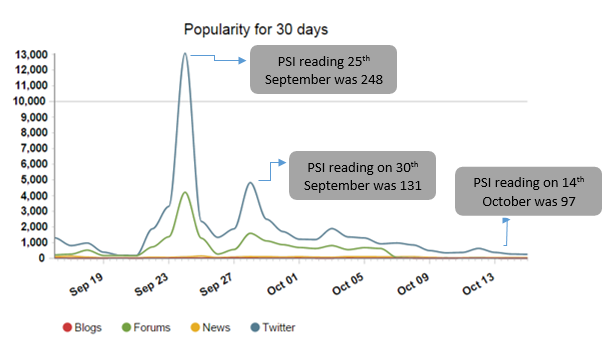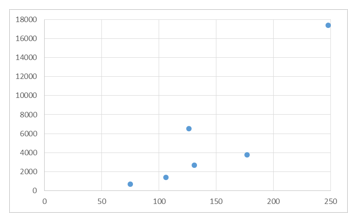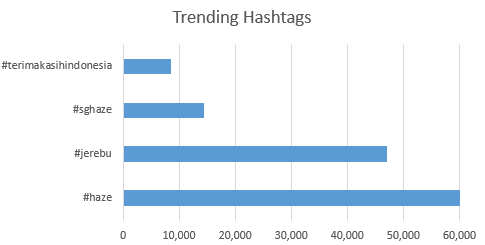How Real Life Events Correlate with Digital Buzz: A Case Study on Haze
The 2015 South-East Asian (SEA) haze has become an air pollution crisis of epic proportions. It has originated from Indonesian forest fires, and has affected several nations in the SEA region. The haze situation has especially worsened in Singapore and Malaysia, as schools were closed and major sporting events, such as the Standard Chartered KL Marathon were cancelled. It has been a source of grave health concern and social media has been abuzz with it.
We have done an analysis which correlates the Pollution Standard Index (PSI) released by Singapore’s National Environment Agency to social media buzz. Higher PSI values indicate lower air quality, with values 101 to 200 being at unhealthy levels.

Based on the graph above, it is evident that social trends of ‘haze’ and ‘jerebu’ (the Malay equivalent of haze) do bear a certain degree of correlation with PSI readings.
Correlation does not imply causation, as the former helps us to identify if variables are affected by each other or not, whereas causality indicates that one variable is the cause of another. A correlation coefficient of +1 is a perfect positive correlation, as it implies that when variable X increases, variable Y increases, and vice versa. On the other hand, a correlation coefficient of -1 indicates a perfect negative correlation, which means that when variable X increases, variable Y decreases. A correlation coefficient near 0, indicates no correlation. For a deeper understanding of correlation, we can create a scatter plot to have a visual understanding of this. For this analysis, our correlation is 0.88, based on 6 days readings of PSI and buzz surrounding haze. This implies that there is a very strong correlation, albeit not a perfect one.
For this analysis, our correlation is 0.88, based on 6 days readings of PSI and buzz surrounding haze. This implies that there is a very strong correlation, albeit not a perfect one.
As usual the general sentiments towards the haze were unfavorable as many netizens were dissatisfied with the recurrence of the haze situation every year.
Another analytical component in understanding netizens’ reaction towards this crisis is observing trending hashtags in Singapore during this period. Trending hashtags provide an insight as to topics of interests within a short period of time. Demonstrated by the graph below, Singaporeans have sarcastically thanked Indonesia by using #terimakasihIndonesia in welcoming the haze into their nation.
 Additionally, trending hashtags emphasize the role of creating unique hashtags for campaign. Unique hashtags are efficient in allowing netizens to identify and track relevant mentions to a particular campaign or an organization. When netizens and corporations optimize content with hashtags, relevant content becomes more visible.
Additionally, trending hashtags emphasize the role of creating unique hashtags for campaign. Unique hashtags are efficient in allowing netizens to identify and track relevant mentions to a particular campaign or an organization. When netizens and corporations optimize content with hashtags, relevant content becomes more visible.
What’s in it for Marketers?
Till now major brands haven’t used this natural calamity for marketing its offering in Singapore.
What Marketers shouldn’t do: Blow their trumpets
We believe that they don’t have to blow their trumpets by running campaigns like “Every Haze has a silver lining, Get 20% off before Haze ends”. It not only leaves a poor impression amongst your customers but says that this brand is only bothered about itself
What Marketers Should Do: Customer Empathy
Instead brands can use these natural calamity/disasters etc. to empathize with their customers. For example Gas Mask makers or Smoke Protector Mask Brands could have used as a marketing vehicle “To help you navigate the dangerous Haze in this time of great need we are offering our Haze Masks, which protect children and adults by filtering out 99% of particulate matter, at a 20% discount and donating a portion of the proceeds to the World Health Organization.”
This will not only boost their immediate sales but help them stand-out amongst the brands jostling for attention. It works wonders with corporate image of the brand as well
To conclude, it is evident that real life occurrences like natural calamities, mishaps & tragedies are reflected on digital media. Marketers who genuinely empathize with their customers and offer solutions to ease their pain will stand-out in such times.



